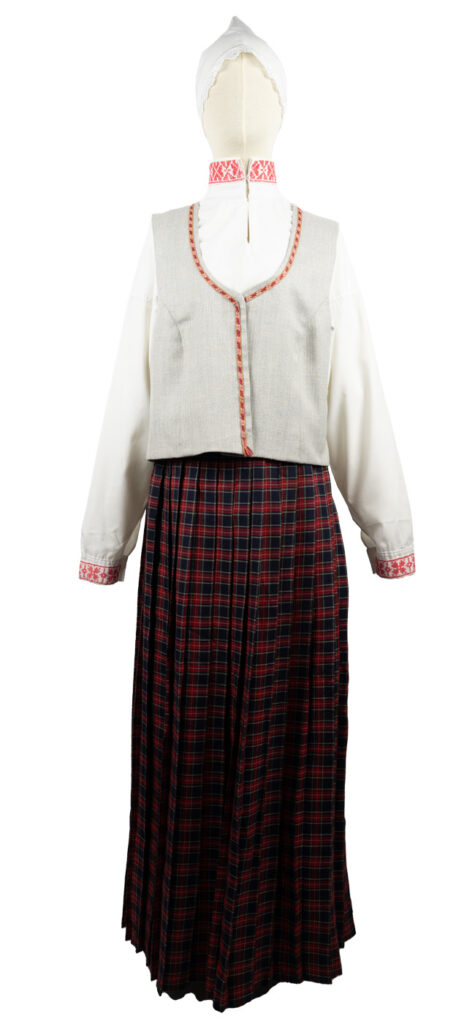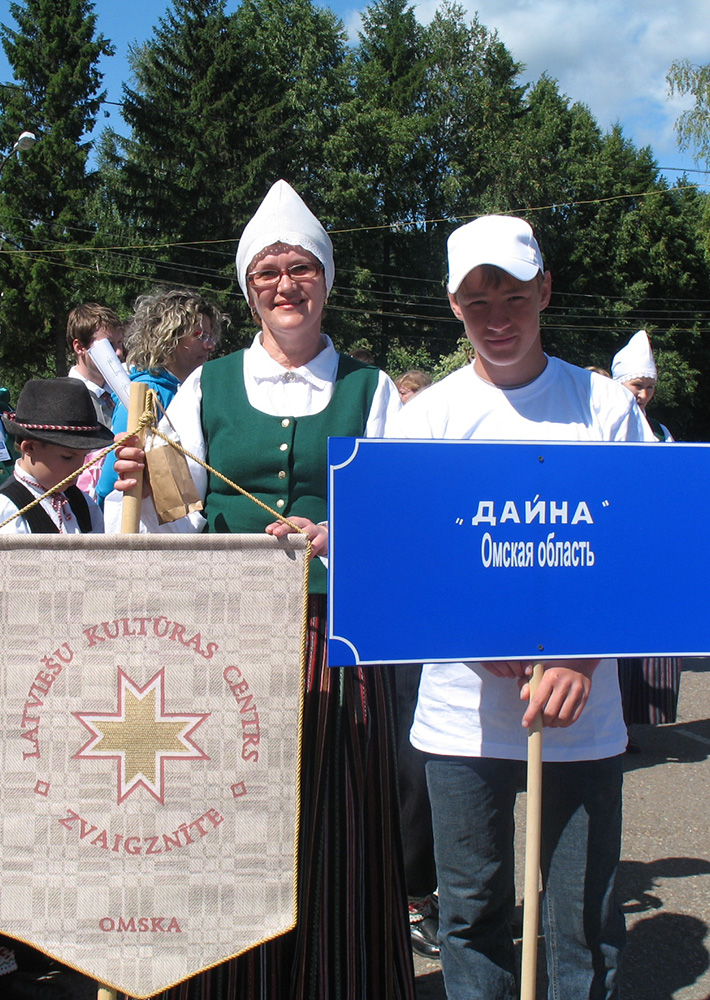Home > In Exile > “Composite” and adapted folk costumes > Siberian sewn gown


Siberian sewn gown
Folk costume made in 1997 in Omsk, Russia.
This costume was made 25 years ago, when the “Daina” Latvian Folklore Ensemble was established in Omsk, Siberia. The costume was sewn by the daughter of one of the members of the folk ensemble, who is of Polish heritage, but has been part of the Omsk Latvian Society all her life. The shirt was embroidered by a Latvian, Ausma Kuļika. The costume was based on another costume that was owned by the first leader of the folklore ensemble, Austra Iščenko, who was from the Kurzeme province. Members of the folklore ensemble found fabrics in haberdasheries in Omsk that were similar to “real” Latvian folk costume fabrics.
The costume was first worn in a performance at the opening concert of the Omsk People’s Friendship Hall. It has also been worn when the “Daina” ensemble has celebrated Easter, Midsummer’s Eve and Christmas, as well as the 18 November – Proclamation day of the Republic of Latvia. The costume was worn when visiting other Latvian communities in Russia, when participating in the Omsk city celebrations and various other events in the Omsk Oblast. The costume has also visited Latvia before – at the Song Festival and the 800th anniversary of Valmiera.
The Omsk Latvian Folklore Ensemble “Daina” continues to this day – it has 30 members, who sing and play folk instruments. Today “Daina” members wear folk costumes that have been made in Latvia. Raisa Bakanova, the leader of the ensemble comments that “by putting on a Latvian folk costume, you get a feeling of belonging.” Latvians from Omsk have not lost this feeling even over a number of generations – since the time when Latvian farming colonies were established in Siberia in the second half of the 19th century.
